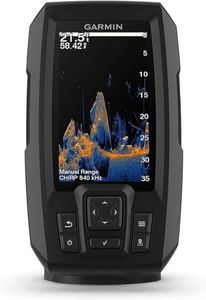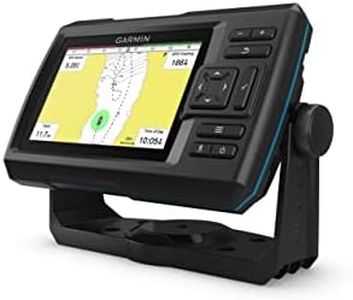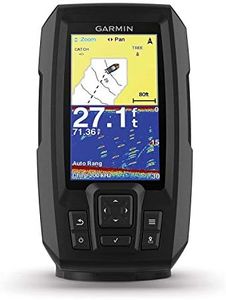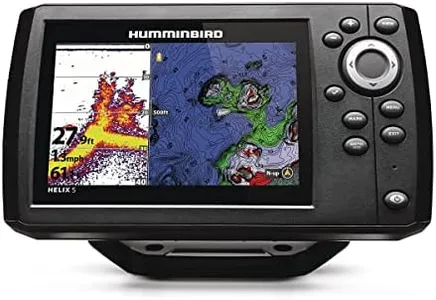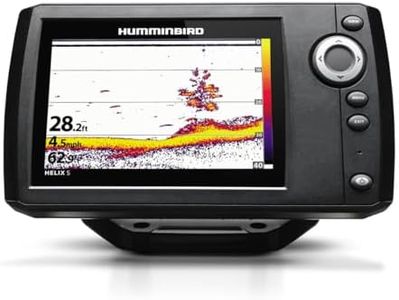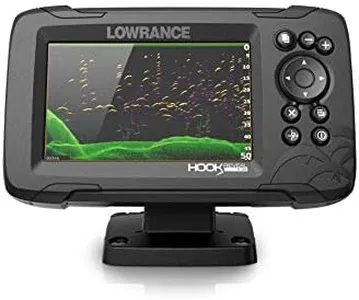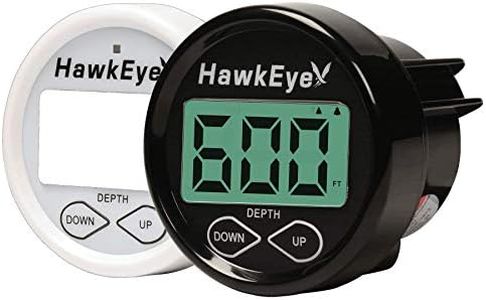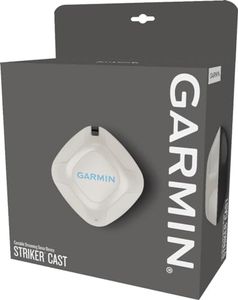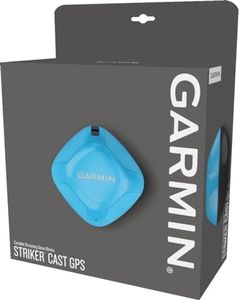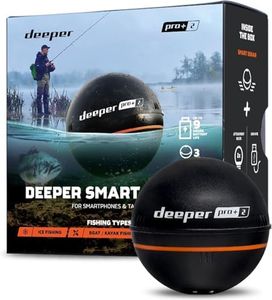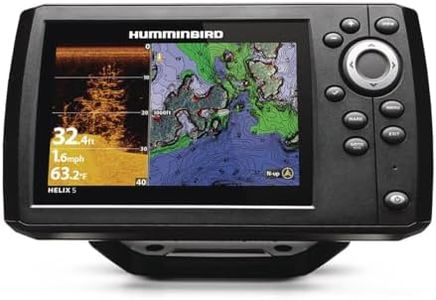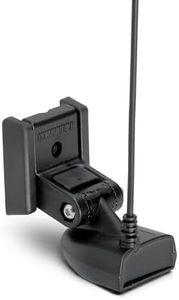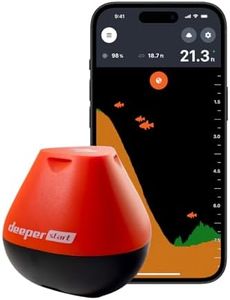We Use CookiesWe use cookies to enhance the security, performance,
functionality and for analytical and promotional activities. By continuing to browse this site you
are agreeing to our privacy policy
10 Best Depth Finders
From leading brands and best sellers available on the web.By clicking on a link to a third party's website, log data is shared with that third party.
Buying Guide for the Best Depth Finders
Choosing a depth-finder, also known as a fish finder or sonar, is all about finding a device that matches how and where you fish. It's helpful to first think about whether you spend most of your time on lakes, rivers, or oceans, and how serious you are about spotting details underwater. Key features like screen display, sonar (how it detects objects under water), and ease of use can all affect how helpful the device will be for you. Think about how you will use the depth-finder day-to-day—do you want something with lots of details, or is a simple depth measurement enough?Display Screen Size and ResolutionThe screen is where you see all the information from your depth-finder. Bigger screens show more detail and are easier to see, especially in sunlight, while higher resolution means sharper images. In general, screens less than 4 inches are good for small boats or kayaks, 5-7 inch screens suit most average users, and large screens over 7 inches benefit those who want lots of detail or split-screen views. If you want to see fish arches and underwater features clearly, pick a larger, higher-resolution screen, but if you just need depth readings, a smaller display is fine.
Sonar Type (Single, Dual, CHIRP, Side/Down Imaging)Sonar is the technology that the depth-finder uses to 'see' underwater. Traditional single-frequency is basic and best for shallow water. Dual-frequency is more flexible for various depths. CHIRP (Compressed High-Intensity Radar Pulse) provides much clearer and accurate images, helpful for finding small fish or details. Side imaging sends sonar beams out to the sides for a wide view, great in shallow areas for scanning lots of water. Down imaging shows a detailed picture directly below the boat. If you fish in deep water, opt for CHIRP or dual-frequency. For detailed structure scanning, side or down imaging is worth considering.
Depth CapabilityThis tells you how deep the device can accurately measure. Shallow water anglers can choose units rated for less than 600 feet, mid-range users might need up to 1000 feet, and deep-sea fishermen will want over 1000 feet capability. Your fishing environment determines what's needed: lakes and rivers usually need less depth range, while ocean or Great Lakes anglers need more.
Transducer Type and Mounting OptionsThe transducer is the part that sends and receives sonar signals. Some are designed for easy mounting on a trolling motor or the back (transom) of a boat, while others might need more permanent installation. For kayaks or portable needs, look for transducers with suction cups or easy mounts. Make sure the mounting type fits with your boat or the way you fish. The better the fit, the more accurate your readings will be.
GPS and Mapping FeaturesSome depth-finders include GPS with mapping, allowing you to mark fishing spots and navigate on the water. Basic models might only show your position, while advanced units let you save locations, plot courses, or see detailed maps. If you move often or fish new places, GPS features can help you find your way and mark hotspots, while those who stick to familiar waters may not need it.
Portability and Power SourceSome depth-finders are designed to be portable, especially useful for kayaks or rental boats, and are powered by batteries. Others may require installation and take their power from the boat. If you need something easy to take on and off, or you use several boats, portability and battery operation are valuable features.
